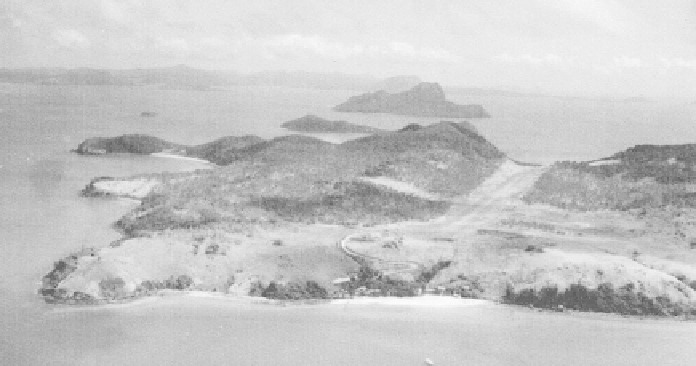Geoscience Reference
In-Depth Information
SRS189/1 Box 17 Item 73, Queensland State Archives, Brisbane
Parks Ranger Hausknecht stated that the construction of the new airstrip would
involve the destruction of between 1,500 and 2,000 trees. The second airstrip
and a terminal building were commissioned in 1957, and air services to the island
which illustrates the extent of deforestation that took place. Comparable land
clearance took place during the construction of the Dunk Island airstrip, which
Other airstrips were constructed at Brampton Island (although that development
also involved land reclamation and modification of part of the island's shoreline),
Introduction of exotic species of vegetation
When J. S. V. Mein cleared the centre of Green Island in 1857, that land was
used to plant exotic species of vegetation that were obtained from the Botanical
Gardens in Sydney, as his account in
The Sydney Morning Herald
indicates:
The centre of the island we had cleared and planted with a lot of things
procured from the Botanical Gardens of Sydney. Among the plants were
Mein's alteration of the vegetation composition of Green Island represents
an early example of the introduction of exotic species of vegetation to island
ecosystems. Many other examples of the introduction of vegetation species are
found in documentary records. Before 1931, bananas and pawpaws were planted
on Snapper Island, which probably represented the remains of an early Chinese
market garden (QEPA, 2003c). In 1933, J. V. Busuttin, the Lessee of the Repulse

Search WWH ::

Custom Search